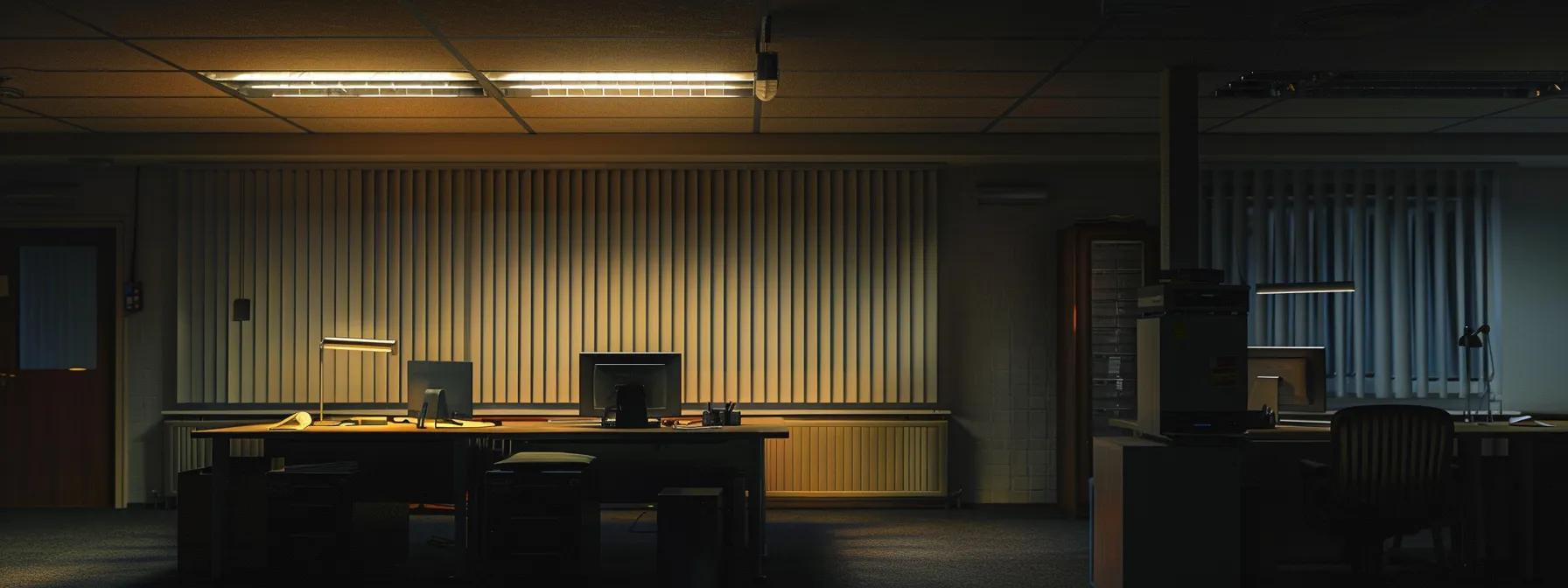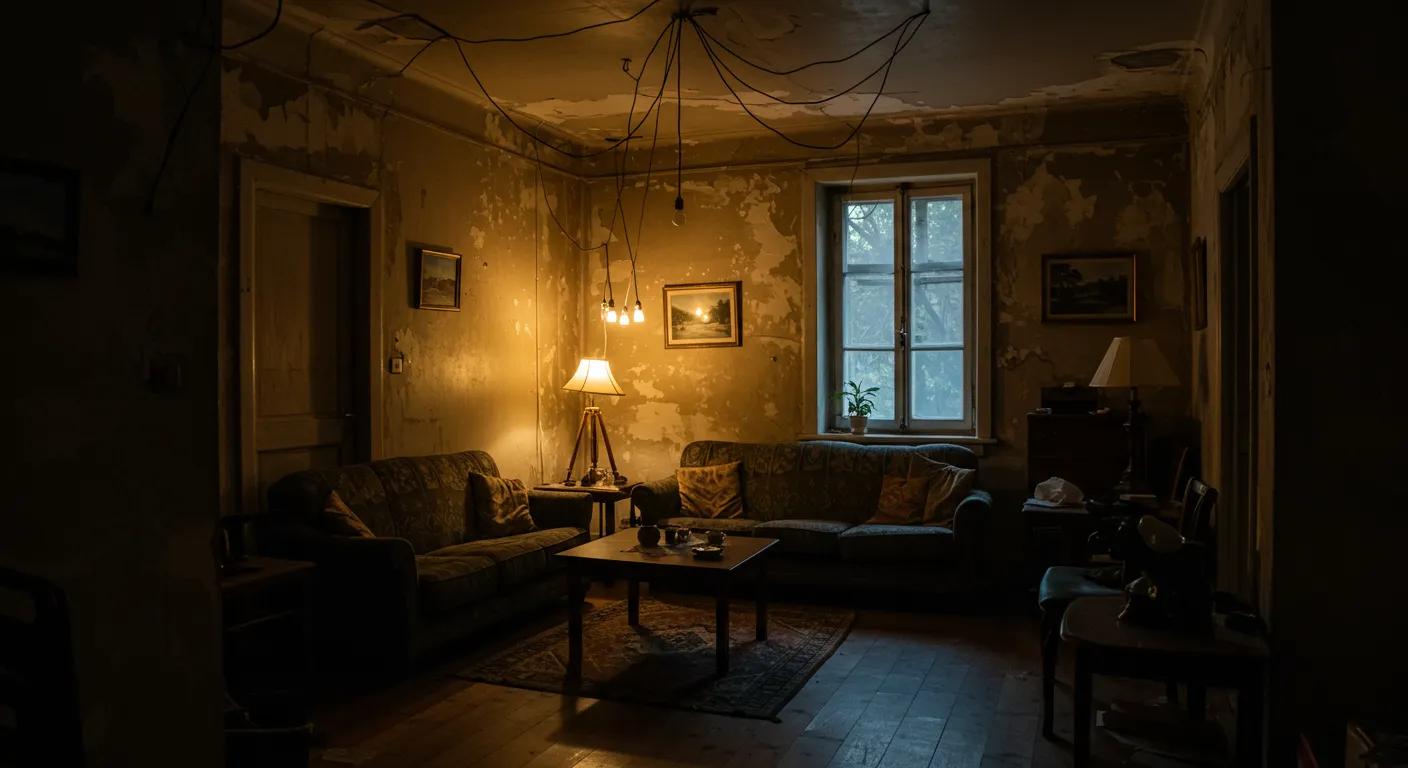Understanding Flickering Lights for Your Lexington Home
Electrical issues in a Lexington home demand careful attention, as flickering lights can signal underlying problems with wiring, connections, or voltage stability. This article examines common causes of flickering lights, evaluates potential safety risks, suggests quick fixes for temporary relief, and advises when to seek professional help. Homeowners and business owners will gain insight into whether the flickering is normal or indicative of a serious electrical fault.
Identify Common Causes of Flickering Lights in Your Lexington Home
Understanding why lights flicker is key to early diagnosis and risk mitigation. Several factors can lead to inconsistent lighting performance in a home.
Understand How Faulty Bulbs Contribute to Light Flickering
Faulty or incompatible bulbs are a common culprit. Bulbs with defective filaments or nearing the end of their life can produce intermittent light. Additionally, using bulbs that do not match fixture specifications may cause electrical arcing and flickering. Replacing bulbs with the correct wattage and type can often resolve the issue.
Examine the Impact of Loose Electrical Connections on Lights
Loose connections—whether at the socket, fixture, or within the wiring—can cause fluctuating voltage and irregular light output. Such issues are more common in older homes with outdated wiring and can pose a fire risk. Regular inspection and tightening of screws or replacement of deteriorated wiring can improve both safety and performance.
Learn About the Role of Voltage Fluctuations in Lighting Issues
Voltage fluctuations, caused by power grid inconsistencies or internal load changes, may result in dimming or flickering. When high-powered appliances draw a surge of energy, other devices may suffer a temporary voltage drop. Using voltage regulators and surge protectors helps stabilize the electrical flow, and periodic monitoring with a multimeter is advised.
Recognize How Circuit Overloads Can Cause Flickering Lights
When too many appliances share one circuit, excessive energy demands can overload it and lead to intermittent flickering. While surge protectors and circuit breakers can help, persistent overload may require an upgrade to the electrical panel or the addition of new circuits. Professional evaluation is recommended for these situations.
Explore the Influence of Incompatible Dimmer Switches on Lights
Incompatible dimmer switches can disrupt the performance of LED, fluorescent, and other energy-saving bulbs. A dimmer not designed for a specific bulb type may deliver inconsistent power, causing flicker. Upgrading to a compatible dimmer, as specified by the manufacturer, can restore steady illumination.
Evaluate the Safety Risks Linked to Flickering Lights

Flickering lights are more than an annoyance; they can signal significant safety hazards.
Assess Potential Fire Hazards Associated With Flickering Lights
Persistent flickering can cause overheating and arc flashes, potentially igniting nearby materials. As it increases wear on wiring and appliances, the risk of electrical fire rises, especially in older homes with wiring not up to current codes. Installing smoke detectors and using fire-resistant materials can enhance safety.
Identify Electrical Shocks as a Serious Concern With Flickering
Flickering may indicate compromised wiring that risks causing electrical shocks. Deteriorated or exposed wires can lead to dangerous discharges that harm residents and damage appliances. Immediate repair by a licensed electrician is crucial to eliminate shock risks.
Consider the Importance of Professional Inspections for Flickering
Professional inspections are vital to uncover hidden issues that may cause flickering. Electricians can test voltage levels, assess wiring integrity, and verify connections, ensuring that minor issues do not become major safety hazards. Routine electrical maintenance is recommended.
Investigate How Ignored Flickering May Indicate Bigger Issues
Ongoing flickering without a clear cause might signal deeper problems within the electrical infrastructure. Unstable voltage over time can stress appliances, affect security systems, and even damage the electrical panel. Early detection through regular monitoring is essential to prevent costly repairs.
Implement Quick Fixes for Temporary Relief From Flickering
For immediate relief, temporary measures can stabilize flickering until professional services are available.
Change Light Bulbs to Eliminate Flicker Caused by Malfunctions
Replacing bulbs that are malfunctioning or near the end of their life can quickly restore consistent lighting. Using high-quality, energy-efficient bulbs that match fixture requirements is a simple and cost-effective fix.
Tighten Loose Connections to Stabilize Light Performance
Ensuring that screws, connectors, and bulb fittings are secure can often stop intermittent flickering. Always cut power before checking fixtures to prevent electrical shock.
Reset Breakers to Resolve Minor Electrical Issues Swiftly
Tripped circuit breakers might interrupt current flow and cause flickering. Resetting these breakers can often clear up minor faults; if the problem persists, it might indicate a deeper issue needing further inspection.
Replace Dimmer Switches With Compatible Models for Better Function
If an incompatible dimmer switch is causing irregular power delivery, replacing it with a model that supports the specific bulb type can resolve the flickering. Always check manufacturer guidelines to ensure proper compatibility.
Seek Professional Help for Persistent Flickering Problems

When quick fixes fail, persistent flickering typically points to more complex electrical issues that call for professional diagnosis.
Schedule Electrical Inspections for Recurring Flickering Issues
Repeated flickering, despite temporary repairs, signals the need for a comprehensive electrical inspection. Licensed electricians can conduct tests on circuits and wiring to identify hidden faults before they lead to major failures.
Trust Licensed Electricians With Complex Electrical Systems
Especially in older homes, complex and outdated wiring systems require the expertise of licensed professionals. Qualified electricians ensure that all repairs meet current codes and reduce the risk of future malfunctions.
Discuss Long-Term Solutions With an Electrical Expert
While quick fixes can provide temporary relief, long-term solutions such as upgrading panels, rewiring circuits, or installing voltage stabilization equipment are crucial for ongoing safety. Consulting an electrical expert ensures that the root cause of flickering is properly addressed.
Understand the Benefits of Regular Maintenance for Lighting Systems
Routine maintenance can spot early signs of wear, loose connections, or voltage inconsistencies before they escalate. Regular check-ups improve overall system efficiency and reduce the likelihood of emergencies.
Differentiate Between Normal and Problematic Flickering of Lights
It is important to discern when flickering is normal and when it signals deeper issues.
Establish When Flickering Is a Natural Occurrence in Homes
Occasional, brief flickers—often during high-energy consumption or at startup—are generally normal. Modern bulbs may flicker briefly as they adjust to optimal brightness levels.
Recognize Signs That Indicate Serious Electrical Performance Issues
Frequent or prolonged flickering, especially when accompanied by unusual smells, buzzing noises, or warm fixtures, suggests significant electrical faults. Multiple symptoms, such as tripped breakers alongside flickering, require prompt professional evaluation.
Distinguish Between Flickering Due to Energy-Saving Bulbs vs. Others
Energy-saving bulbs such as LEDs and CFLs can have a brief flicker as they stabilize, but constant or erratic behavior likely points to issues beyond bulb technology. Comparing performance across bulb types can help isolate the problem.
Assess How Environmental Factors Can Affect Lighting Behavior
Temperature, humidity, and nearby high-power devices can all influence wiring performance and cause transient flickering. Recognizing these factors helps determine if flickering is temporary or a sign of an underlying electrical concern.
Understand the Impact of Home Age on Flickering Lights

Older homes are more prone to flickering due to aging infrastructure and outdated wiring.
Learn How Older Homes May Have Outdated Wiring Affecting Lights
Wiring in older homes often does not meet modern electrical codes. As insulation deteriorates and connections corrode, the electrical load is not evenly distributed, leading to frequent flickering. Upgrading wiring or reinforcing connections may be necessary.
Evaluate the Role of Electrical Systems in Vintage Houses
Vintage homes may have layers of electrical modifications, including outdated panels and fuse boxes. An electrical audit can help identify critical components that need upgrading while preserving the home’s charm.
Plan for Updates to Enhance Safety in Older Homes’ Electrical Networks
Upgrading an older electrical system—such as replacing outdated breakers, installing additional circuits, or adding ground fault circuit interrupters (GFCIs)—can reduce flickering and improve overall safety.
Weigh the Advantages of Modernizing Lights to Prevent Flickering
Modern lighting solutions, such as LED and smart systems, provide more stable voltage delivery and greater durability. Retrofitting older homes with these fixtures can yield energy savings and lower maintenance costs while reducing flickering.
Final Thoughts
Lexington homeowners should recognize that flickering lights can indicate critical underlying electrical issues. Addressing faulty bulbs, loose connections, voltage fluctuations, circuit overloads, or incompatible dimmer switches is essential to improving both safety and performance. While temporary fixes may provide brief relief, persistent flickering warrants professional inspections to ensure long-term reliability. Regular maintenance and timely updates are fundamental to maintaining a safe, efficient electrical system.
Frequently Asked Questions
Q: What immediate steps can homeowners take to address flickering lights? A: Replace faulty bulbs, tighten loose connections, and reset circuit breakers to stabilize electrical flow temporarily.
Q: How do voltage fluctuations affect home lighting? A: They can cause lights to dim or flicker when power surges occur. Voltage regulators or surge protectors may be required to stabilize the flow.
Q: When should a homeowner consult an electrician regarding flickering lights? A: If flickering persists or is accompanied by burning smells, frequent breaker trips, or visible wiring damage, a professional inspection is necessary.
Q: Can upgrading to modern lighting help reduce flickering? A: Yes, modern LED and smart lighting systems offer more stable performance and reduced energy consumption, lowering the risk of flickering.
Q: Do older homes require special maintenance for electrical systems to prevent flickering? A: Absolutely; regular electrical audits and upgrades to replace outdated wiring and panels are key to minimizing flickering issues.
A comprehensive understanding of these factors empowers homeowners, ensuring a safer and more efficient electrical system that meets modern demands while preserving the unique characteristics of Lexington homes. Regular maintenance and cautious upgrades safeguard not only functionality but also the integrity of the home’s electrical network.

